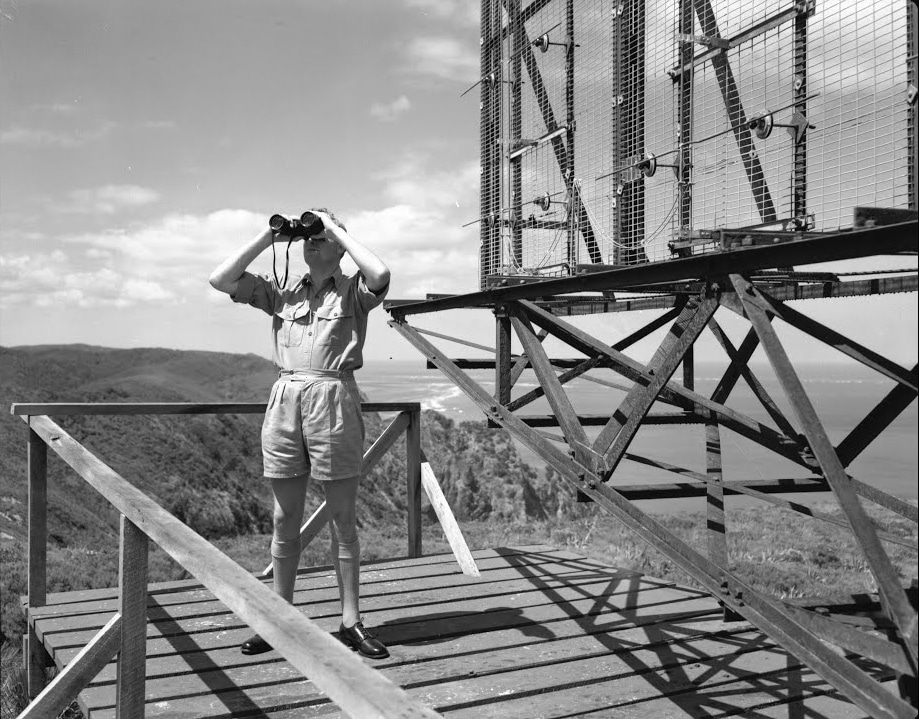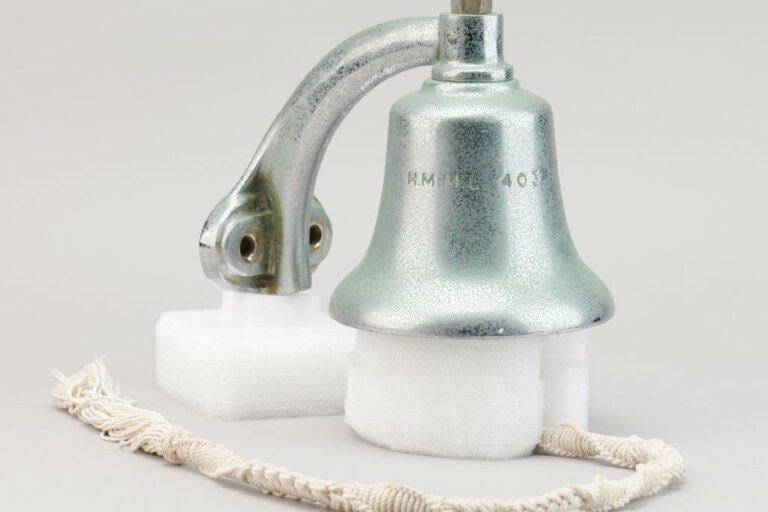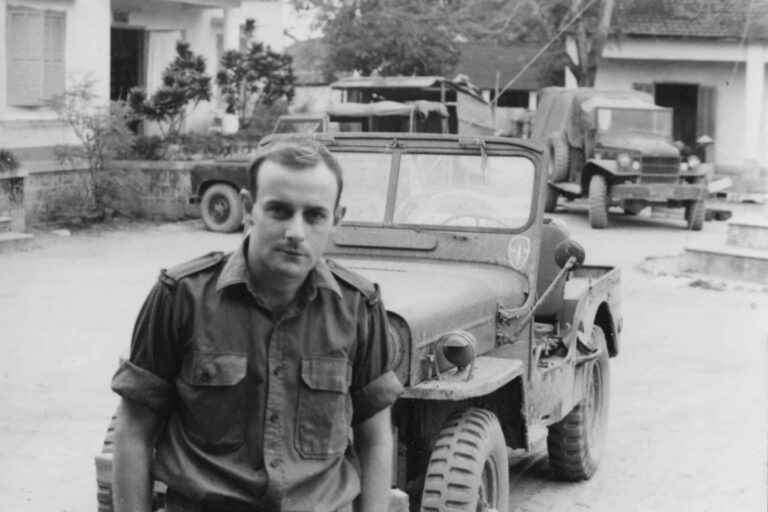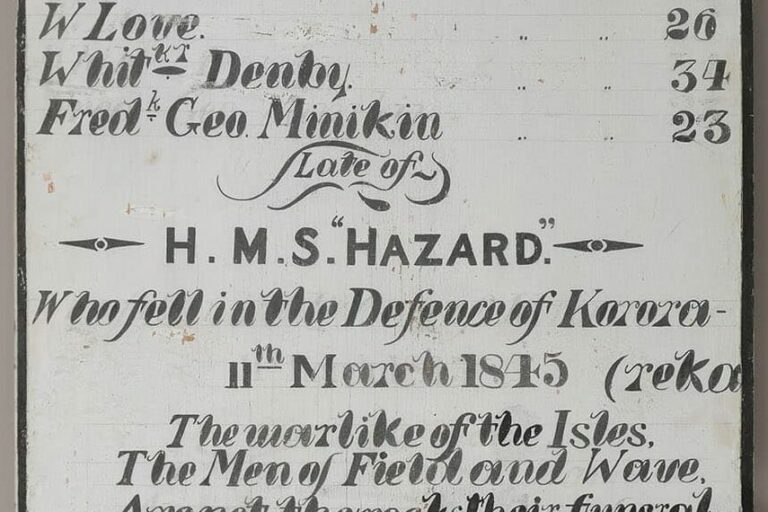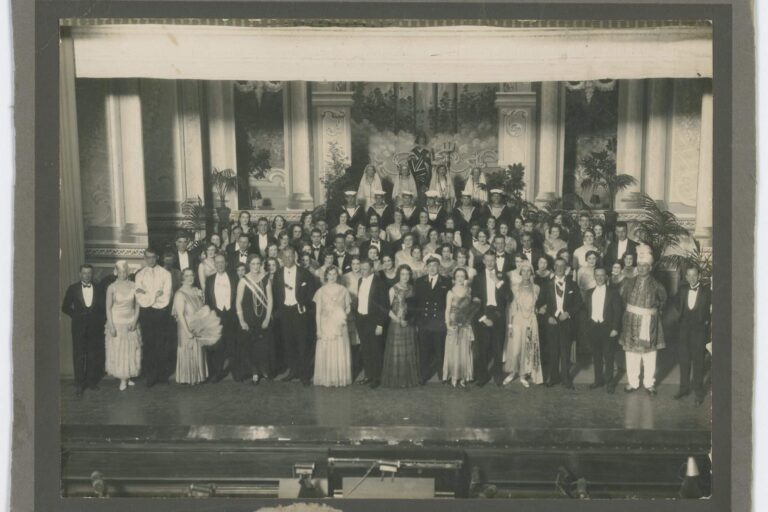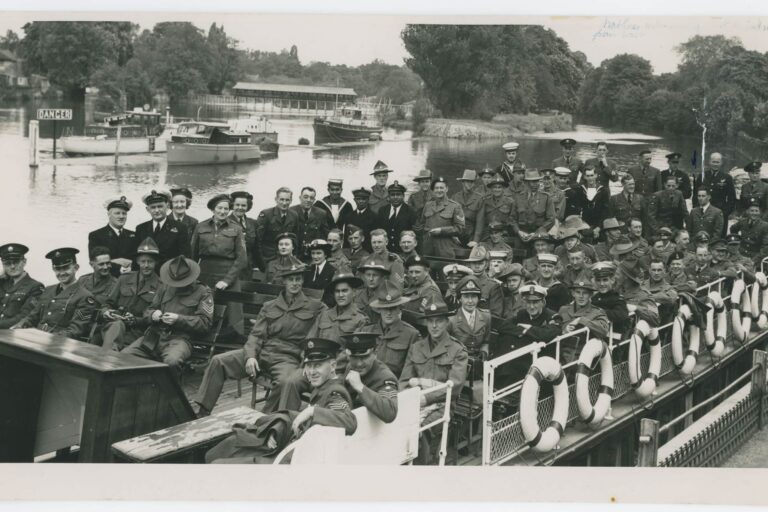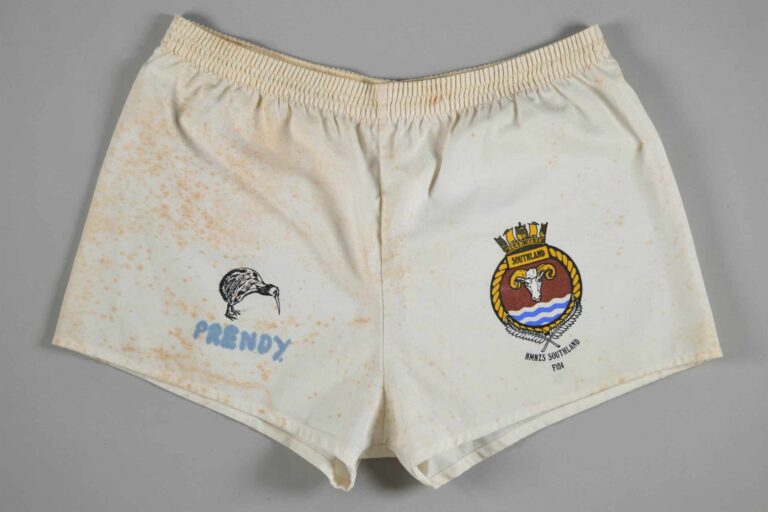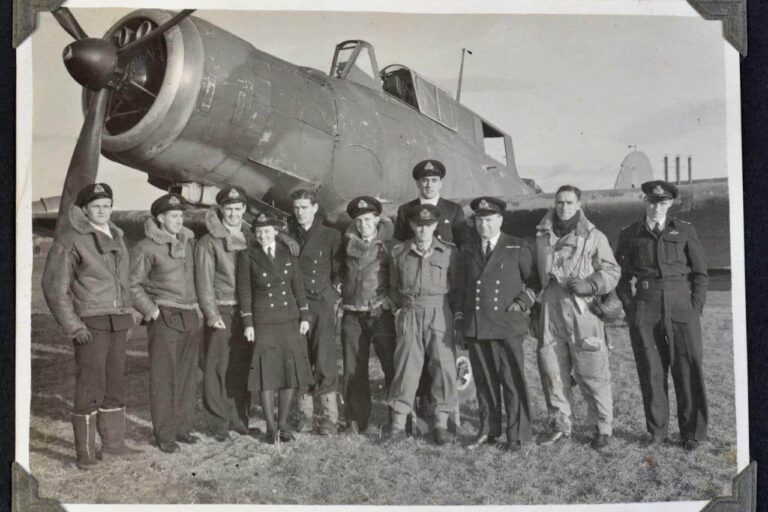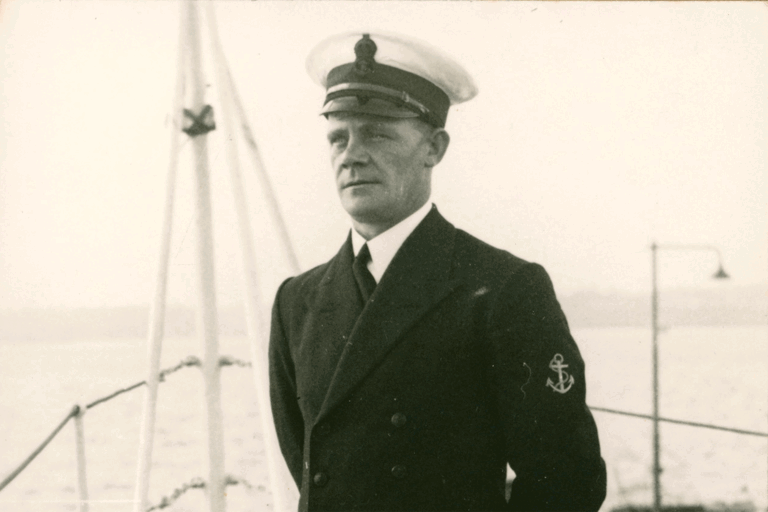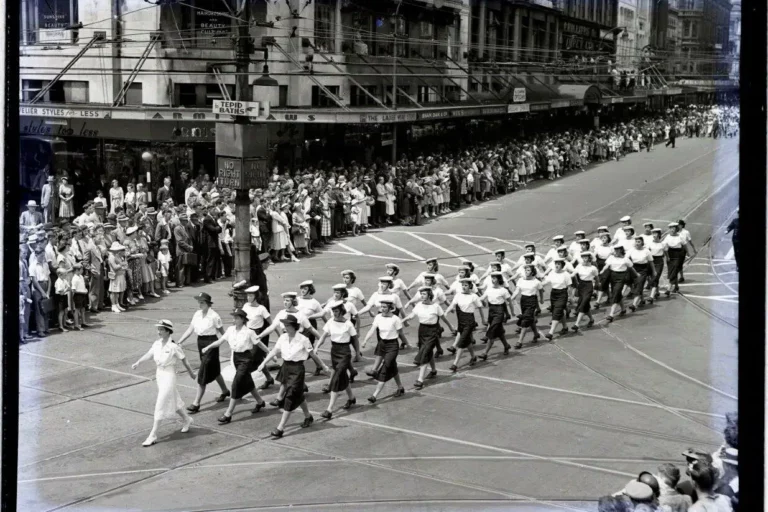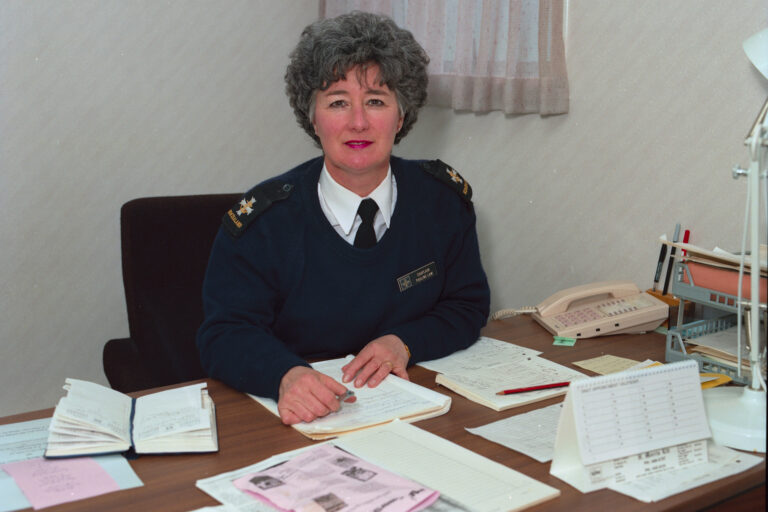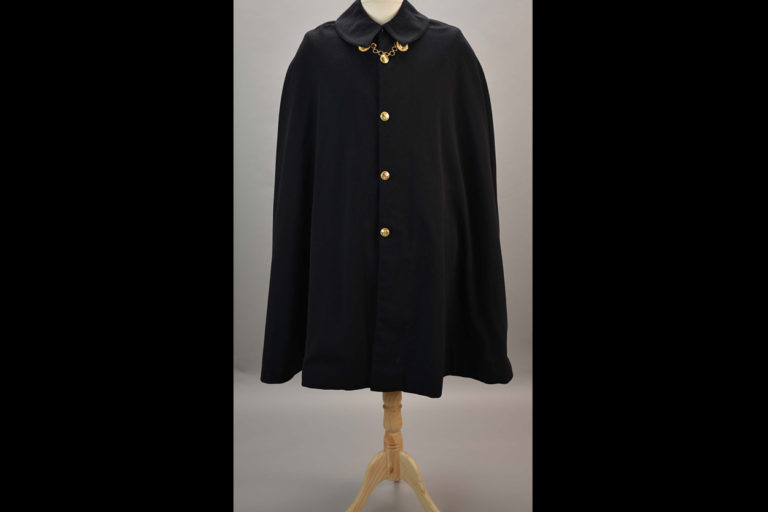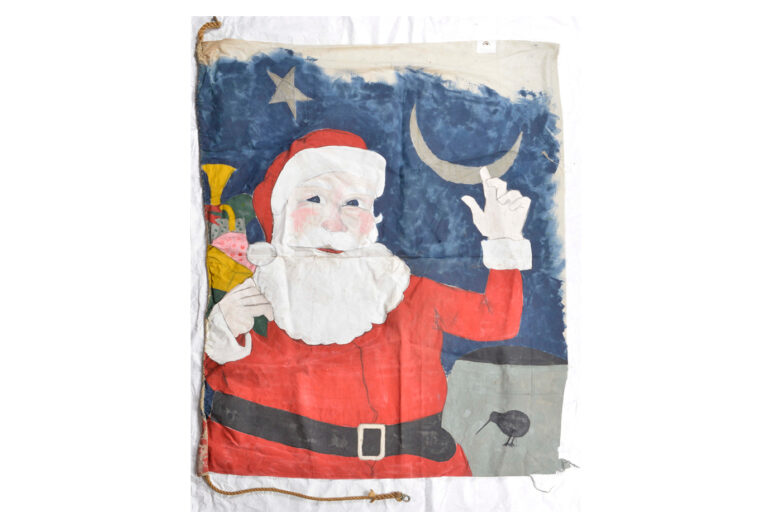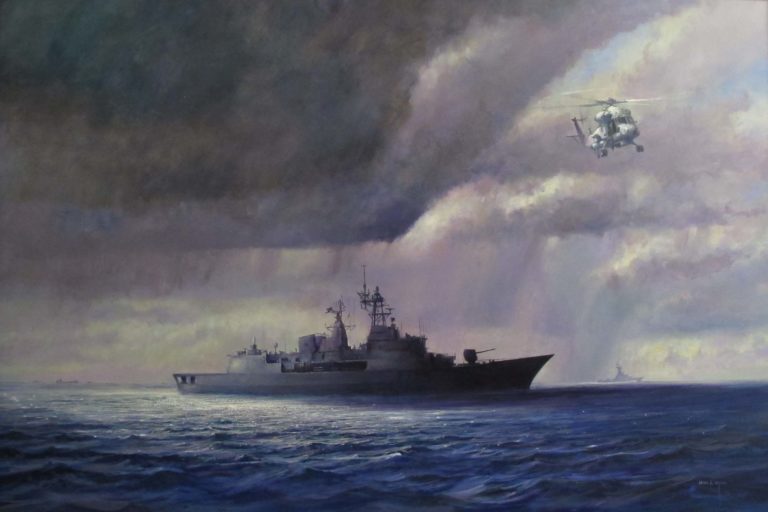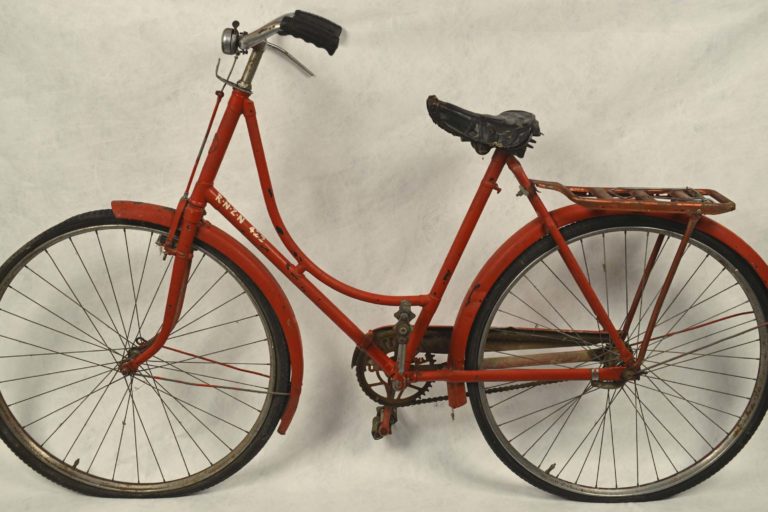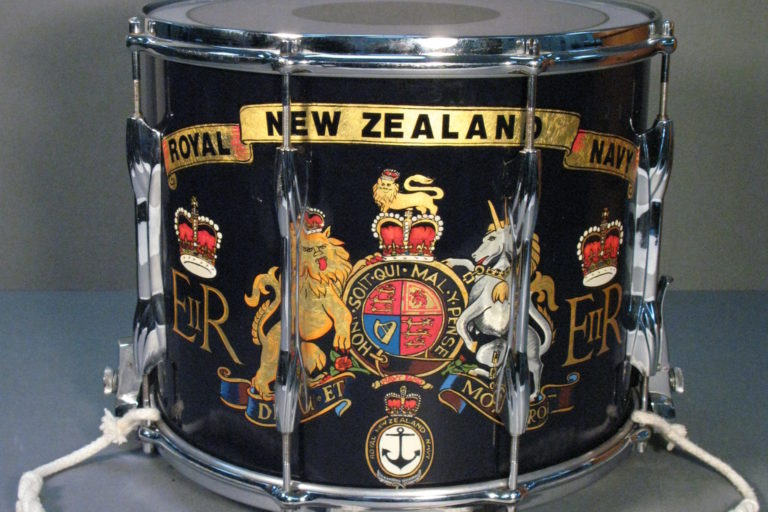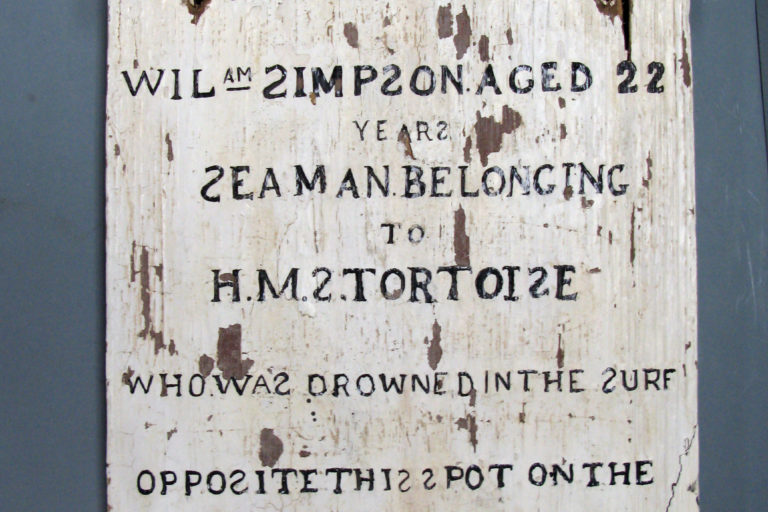NZ had an early connection with radar, which it was slow to recognize. In 1930 the NZ-born scientist W.A. S. Butement approached the British War Office with designs for a radar set He was informed that Britain had no need for such a device. Keen-eyed look-outs were all the Royal Navy would ever require.
A Bruising Introduction to Radar
The New Zealand Division of the Royal Navy experienced a brutal introduction to radar – a battle where its enemy had radar, and the New Zealand cruiser HMS Achilles had none.
At the Battle of the River Plate on 13 December 1939 the German armoured cruiser KMS Admiral Graf Spee was equipped with fire-control radar which should have been decisive in the gun duel.
Achilles and her sister ship HMS Ajax manoeuvred in smoke, a futile tactic against a radar equipped enemy.
But a lucky mischance put the German radar out of service for most of the action, and the British ships were victorious.
As a result of this lucky escape from destruction the senior commanders of the New Zealand Division embraced radar with a much greater enthusiasm than did its sister services the Army and RNZAF.
Of 180 radar sets built in New Zealand, almost half went to the Navy. The need for robustness in naval equipment was made evident by the battle.
When Achilles fired a full broadside, the New Zealand radar switchboard split from top to bottom, and the motor-alternator set jumped on its mounting and destroyed the coupling.
Not for nothing did the American Naval Research Laboratory speak of making equipment “battle-worthy” as well as “sea-worthy”.
What happened next must be pure speculation.
To German gun crews brought up on the accuracy of radar-directed fire, the loss of the SEETAKT fire-control radar would be devastating.
The harried electronic technicians spent all day before they got SEETAKT back in action. By this time the Germans had lost the battle. Ajax and Achilles manoeuvred at full speed through their smoke, and dashed out to fire broadsides at the battleship.
By the end of the day Ajax had fired 820 rounds of 6-inch ammunition, and Achilles 1240 rounds. However, these shells weighed only 112 pounds (51 kg), and bounced off the battleship’s armour belt like ping pong balls. Graf Spee’s engines, guns and ammunition were safe behind armour plate, and there seemed no way of hurting her.
Captain Parry of Achilles was heard to remark ‘We might as well be pelting her with snow-balls!”.
However Graf Spee was vulnerable in an unexpected way. Not all her crew could shelter behind armour plate.
Bridge crew were unprotected, look-outs were posted all around the ship to watch for torpedoes, and the Director Control Tower crew spotting fall-of-shot had only thin steel plate between them and incoming shells.
A career of sinking defenceless merchant ships had not prepared the Germans for an enemy who actually fired back.
When 36 of his crew lay dead, and 60 were wounded, Captain Langsdorff was shocked to realize that his crew’s morale was collapsing.
He had no alternative but to seek shelter in a neutral port. With diesels hammering, Graf Spee made a bee-line for Montevideo at 23 knots, followed at a respectful distance by Ajax and Achilles, like a pair of Pekinese threatening a mastiff.
Late in the day, Graf Spee’s gun-fire recovered its earlier accuracy; and in retrospect it seems likely that the technicians had now repaired SEETAKT.
Commodore Harwood took Ajax south around the English Bank to cut off possible escape.
He ordered Achilles to follow Graf Spee into the estuary.
Graf Spee was now silhouetted against a setting sun, a perfect mark for Achilles’ optical range-finder.
But Achilles herself was in relative darkness, safe from optical range-finding. In these conditions, at 2050 Graf Spee fired three salvoes at 22,000 yards range, all accurate for line, the first two short, and the third over.
It appears likely that SEETAKT was again operating. The straddle demonstrated to Captain Parry that destruction was not far away.
Achilles replied with five rapid salvoes and retired fast, making smoke. Between 2130 and 2145 Graf Spee fired a further three salvoes, all falling short.
Is it permissible to speculate that Achilles was now protected from radar-directed fire by echoes from adjoining land?
These were the last shots of the battle.
Unable to enthuse his crew to fight further, Captain Langsdorff embarked a skeleton crew of volunteers, sailed down the estuary, and scuttled his ship. He then committed suicide.
When the victorious Achilles came alongside the half-sunken wreck, a young torpedo specialist Lieutenant “Toby” Harper gasped in horror.
He alone among the crew had the technical knowledge to recognize the significance of a bunch of aerials (looking like a bed mattress on its side) mounted on the Director Control Tower.
He hurried to Captain Parry, and explained that this could only be the aerial of a radar directing the fire of the main armament.
Captain Parry arranged for a radar expert to fly out from England, and he confirmed the diagnosis.
Achilles returned to New Zealand to a hero’s welcome. But Toby Harper saw no occasion to rejoice.
He considered that his ship had had a very narrow escape, and resolved never again to fight blind.
Toby approached Navy Office and offered to build Achilles a radar to direct the fire of the main armament.
Development of the Radar Programme
Upon the return of Achilles and the knowledge gained from the Graf Spee, the Navy Office in Wellington embarked on a five-pronged programme for radar development
- Staff training
- Coast watching (CW)
- Ship warning (SW)
- Ship warning and gunnery (SWG)
- Aid to New Zealand’s allies
To supervise this programme, a specialist radar officer was appointed to Navy Office, first Lieutenant “Toby” Harper who was then superseded by Commander Giles, and finally Lieutenant Commander Markiew.
This functionary established a close and cordial liaison with the civilian organization charged with radar design and construction.
Civilian scientists were given honorary commissions, and invited aboard naval ships so they could appreciate technical aspects of naval needs, and view operational problems directly.
This programme was successful, and it was not until late in the war that the RNZN turned to Royal Navy to supply it with radar sets.
Staff Training
When the war had ended and Kriegsmarine records were available to British investigators, it became obvious that the Germans’ greatest mistake had been to entrust their ship-borne radar to relatively junior and untrained officers and ratings.
They knew that SEETAKT was prone to failure under the vibration of over-stressed diesel engines.
Yet Graf Spee was lost because it took all day to repair their radar set. RNZN did not make this mistake.
Immediate steps were taken to train a balanced force of officers, petty officers, and ratings, both as skilled operators and as radio mechanics.
When the RNZAF Museum was established at Wigram, they found in their records a photograph that puzzled them — a group in Naval uniforms.
This was the first class of radio mechanics, trained by kind courtesy of the Air Force, before the Navy could set up training facilities of its own.
After this initial help by the Air Force, the Navy established a radar school at Auckland University on 2 December 1940 with Mr H.D. Dobbie as instructor, to train 190 radio mechanics per year plus 240 seamen (RDF) as operators.
This proved a highly successful scheme, providing both operators and radio mechanics for New Zealand radar, both ashore and afloat.
Of the 270 radio mechanics finally trained, more than half were sent for service overseas (Royal Navy and US Navy), along with skilled operators.
Some WRENS were also trained as radar operators, and sewed in the harbour-watch station at Takapuna.
The final success of the training programme came in 1943.
As the US Navy began its victorious advance after the touch-and-go battles around Guadalcanal, it was agreed that New Zealand would provide some mobile radar stations to defend newly won beach-heads.
Admiral Halsey specifically requested that New Zealand provide officers and men to staff these stations.
Thanks to its excellent training programme, the RNZN was able to provide no less than thirteen officers and 173 ratings to COMSOPAC.
They served with distinction in malarial jungles, deep mud and enemy bombing, happily with only one casualty.
In addition, a large number of New Zealand trained radar officers and ratings served in ships of all types in the British Pacific Fleet.
Coast Watching (CW)
This programme aimed at a close surveillance of shipping movements around the New Zealand coast (low-flying planes could also be detected).
At first thought it might be felt that New Zealand was too remote from the active war for such surveillance to be necessary.
But post-war examination of German records showed that German raiders had laid mine-fields at Auckland, Wellington and Lyttelton.
The Germans obviously underestimated the ferocity of the Southern Ocean, since the last two of these mine-fields were never even noticed by New Zealand.
The Auckland mine-field sank the large liner RMS Niagara, complete with a cargo of gold bullion. The German raider Orion sank the SS Turakina in the Tasman Sea, and the raider Komet sank the SS Holmwood off the Chatham Islands.
Both raiders then combined to sink the 17,000 ton liner SS Rangitane only one day out of Auckland.
A Japanese submarine audaciously sailed through Cook Strait at night on the surface, observed by radar stations on both sides of the Strait.
In March 1942, a Japanese aeroplane over-flew Auckland, no doubt launched from a surfaced submarine. It was not observed, since the air-warning radar was in course of being relocated.
A decision of the Chiefs of Staff Committee to establish sixteen radar coastwatching stations in New Zealand, controlled and manned by the Navy, had been approved by War Cabinet in July 1940.
These stations were sited on headlands and islands around the coast to give maximum cover to the principal harbours, the approaches to Cook Strait and Foveaux Strait, and other focal areas.
The ultimate complement of each station was one officer, eight or nine seamen operators, and two mechanics.
The stations were self- contained units with good living quarters, storage for food, water and oil, and diesel-driven electric generators.
The first was in operation in January 1941, and the others had been completed by 1942.
Materials were carried in barges towed by small launches, under adverse weather conditions. Trips were mostly at night, across minefields in order to start unloading at daybreak, otherwise the morning breeze from the land would quickly work up a rough swell.
Storms wore frequently encountered, while on at least one occasion trips wore made through emergency minefields (enroute to Cuvier Island) unknown at the time of course, to the personnel concerned.
But the trouble really began when the time came to unload materials from the barges.
At Hinau island, for instance, the only landing facility was a concrete block, 12 foot square, jutting out from a low cliff, and unless the weather was unusually calm a vessel could not be moored alongside.
The procedure followed was for the barge to lie in as close as possible and jettison its load (timber and other materials) into the tide. To retrieve the materials, men had to wade in, clad in bathing suits, and often with the waves breaking over their heads.
Even a stone crusher and a bulldozer were landed on Moka Hinau, though not without great difficulty.
Landing conditions at Cuvier Island were even worse. This island, 65 miles by sea from Auckland, lies 17 miles to the south of Great Barrier Island.
It is roughly circular in shape, about one mile in diameter, and some 600 foot high. The whole coastline is rock bound, and rises almost vertically from the sea.
The only landing facility was a small concrete block, 15 feet by 10 feet, near the south-eastern end of the island.
Materials had to be hand winched on to this block and then power winched up a steep slope to the only piece of level ground avail able.
Unloading was carried out with a considerable swell running. The impact of one barge against the landing block dislodged a stack of timber which knocked the departmental overseer into the sea between the barge and the block.
With great presence of mind he dived beneath the barge, thus saving himself from being crushed by the side of the vessel. As it was he sustained a leg injury which necessitated his return to Auckland.
Among the supplies unloaded at Cuvier was a ten ton bulldozer. This was accomplished in a very confined space between rocks, where it was possible to rest the barge at low tide.
The bulldozer had to be helped up the adjacent slope by block, tackle, and winch. After the materials had been landed on Cuvier Island, a track had to be formed to the site of the work and a camp established.
The camp site was on the highest point of the island, nearly a mile from the landing block, and all supplies had to be laboriously dragged on sledges by the bulldozer up steep grades approaching, in some places on in three.
Although the quantity of materials involved was comparatively small, their sledging to the site took almost three weeks.
Naval radar stations were located as follows:
- Cape Brett
- Bream Head
- Moku Hinau
- Cuvier Island
- Great Barrier Island
- Cape Colville
- Cape Rodney
- Bearing Head
- Stephens Island
- Cape Campbell
- Godley Head
SG Radar
In 1943, American SG radar began to arrive in ample quantities.
As the giant attack transports Hunter Liggett, President Jackson, Crescent City were docked in Wellington a SG radar was fitted.
Similarly, US ships with faulty radar would ask for repairs in New Zealand. The historian Louis Brown has described SG as the most effective and most highly appreciated radar in the South Pacific campaign.
The major aid that New Zealand was able to give its American ally was of course the programme of ME and SWG mobile radars described above, manned by New Zealand personnel.
In total, 186 RNZN officers and ratings were seconded to Admiral Halsey. A field laboratory and workshop was established to provide on-the-spot servicing facilities.
This came at a time when American shore-based radar was in desperately short supply, and where priority was inevitably given to installations aboard ship.
In addition, the RNZN supervised installation of an CW radar at Mbenga (Fiji). Four microwave radars (ME) were installed on minesweepers in the Pacific Islands.
PPI displays suitable for bridge mounting were designed for several British radar installations. And help was given to the British Pacific Fleet, including six truck-mounted ME’s.
As the war progressed, it became difficult to define exactly what constituted a naval radar programme.
In New Zealand, the Army, RNZN, and RNZAF recognized clear boundaries and defended them jealously, sometimes to the detriment of efficiency.
But the US Navy fought an integrated war. Admiral Halsey commanded a unified force of ships, aeroplanes, and Marines.
Late in the war, American radar equipment became available in abundance, so New Zealand did not need to make any more.
But Admiral Halsey was desperately short of trained operators and mechanics. He asked New Zealand for skilled operators and radio technicians to man air-warning equipment to protect his ships against kamikaze attacks.
New Zealand viewed this as an RNZAF function but the RNZAF did not feel able to help. NZ had surplus scientist who had been designing naval radars, so these men were put into Army uniform and seconded to the US Navy to train and supervise operators for US “Seeing Eye” (Argus) radar units
For PPI display, the aerial is a parabolic dish (usually truncated top and bottom for naval use) spun at around once per second.
The time base is like the hand of a clock, rotating with the aerial.
Echoes are displayed by brightening the time base, resulting in a map of the district, with the radar station in the centre.
Headlands, islands, ships and buoys can all be seen on this display, with manoeuvring ships clearly visible. Even a submarine periscope returns an echo.
Most modern radars use this display but it was a considerable innovation when introduced in 1941. The PPI display (plan position indicator) was called “the greatest gift of scientist to sailorman since the chronometer” by the official US Naval historian.
In 1942 NZ built its first microwave radar, following an American design.
Display was on a 12-inch (30cm) long persistence cathode ray tube. Range “pips” provided concentric bright circles yielding range (± 500 yards) and bearing (± 2°).
However fall-of-shot was more accurate than this since it did not require absolute measurement.
A rotary spark gap produced a modulator pulse (15,000 volts) to activate the transmitter (a magnetron at 9.7 cm).
This pulse also started a time base and range – marker pips. The receiver used a crystal mixer, with reflex klystron (Sutton tube) as local oscillator, and conventional IF amplifier.
About 22 of these sets (ME) were made, and put to two basic uses.
First they were used to upgrade existing CW stations (see above). And second they were used in mobile form to defend newly won beach-heads in the South Pacific.
For this last application the set was operated and manned by the RNZN. The mobile convoy consisted of two 10-ton trucks, one carrying the radar set in its cabin, complete with spinning aerial.
The second truck carried petrol driven alternators, and a well equipped workshop. On a level site this set could be operating within ten minutes.
This at a time when the standard American SCR 270 took more than a day to install. For a brief few months in 1943 ME was the best radar of its type in the world.
The ME stood up well to damp jungle conditions in the South Pacific. In addition to its warning role (ships, submarines, and low flying aircraft) it was used to direct the fire of 155 mm guns (Long Toms) defending motor torpedo boat bases against Japanese destroyers.
In this role it was badly let down by the quality of American field radios. In any raid, telephone lines were quickly cut by bombing. The US radios failed due to dampness.
Fall-of-shot information then had to go to the guns by runner. And this against a Japanese destroyer maneuvering at 40 knots!
Aid to Allies
Assistance was given to Royal Navy, Royal Australian Navy, Free French Navy, US Navy, and so on. One unexpected problem was that of language.
Walker writes:
“When the Free French destroyer Le Triomphant visited Wellington, I was sent to repair the radar. My French was limited to schoolboy “where is the pen of my aunt?”, and I could find nobody aboard who could speak English. I made my mission known by pointing to the radar aerials, and L was escorted to the radar shack by a bevy of excited Frenchmen, who packed around me to enjoy the excitement. The set was a type I had never seen before, an aeroplane radar built in a number of steel boxes, and diverted from RAF to naval use. There was no instruction book; and no one could explain what the fault was. In deep despair, I opened the nearest steel box, and there was a large glass radio valve with its envelope broken. I held it aloft to a chorus of “Oui, Oui, Oui!” Feeling a total fraud I inserted a new valve, switched the set on, and departed.”
Ship Warning (SW)
The SWG set did not prove ideal in a simple warning role.
The bearings of the DCT (director control tower) were not designed for continuous rotation.
Also Achilles suffered breaks in the tailing gunnery cables, no doubt caused by unexpectedly frequent rotation of the DCT.
It was therefore decided to install a separate ship warning radar (SW) in a small hut between main-mast and funnel to detect other ships and low-flying aircraft.
This design was easy, by adapting the very successful CW to shipboard conditions. This set was rebuilt with Toby Harper’s pull-out trays for rapid repair of faults.
The insulation was toughened up to render it sea-worthy. The first SW was installed on Achilles in August 1941.
Sea trials were successful, leading to installation on HMNZS Leander, October 1941 and HMNZS Monowai, December 1941.
Ship Warning and Gunnery (SWG)
In 1940, Lieutenant Harper set out to design a radar to install in the ship’s Director Control Tower (DCT) to direct the fife of the main armament.
Precise range was considered more important than precise bearing, since in a bad light an optical range-finder can measure bearing, but not accurate range.
Harper began by making three drastic breaks with existing radar design:
- He considered that precision range-finding would require a quartz controlled oscillator for range pips.
- He insisted that breakdowns be quickly repairable.
- He selected a Yagi aerial in place of the conventional “batwing” array of dipoles.
The standard RN gunnery wavelength was 50 cm. With the American “acorn” valves (955) available in New Zealand, Harper could get down only to 73 cm.
The transmitter was initially push-pull 834’s, later changed to micropups (VT9O).
From a free-running crystal oscillator at 164 kcls (kilocycles per second) multivibrators reduced frequency to 2562 cps, much like a modem quartz watch.
The 164 kc yielded range pips at 1000 yard intervals. A chosen pip triggered a modulator pulse (10,000 volts) to activate the transmitter, and fire a time base.
Display was by A-scan (see above). By phase shifting the repetition frequency a selected portion of the time base could be expanded to display both target and shell splashes for fall-of-shot (STROBE).
To facilitate servicing, Harper abandoned the conventional telephone “rack and panel” which had dominated English electronic construction to that date.
He also avoided the iniquitous RAF steel boxes which had cursed early radar installations in Royal Navy ships.
He built a filing cabinet with trays sliding out on rails, with stops and locks to anchor an extended tray in a rolling sea-way.
Each tray was a chassis with American single-ended metal valves underneath, and all the wiring on top for easy inspection and servicing.
Plugs at the rear of each fray were fed with trailing leads, keeping the equipment working while extended.
This revolutionary feature became standard in most radar sets built in New Zealand after that time. The fate of Graf Spee in 1939, was always top of mind.
This SWG was installed in Achilles in August 1941.
A revised set was installed in October 41 (together with a simple Ship Warning set SW).
A daylight exercise with SWG was carried out with the large liner SS Aquitania as target at ranges between 15,000 and 20,000 yards.
The commanding officer of Achilles reported on the marked superiority of radar range-finding over optical range-finding.
He commented that radar produced a regular plot of perfect consistency, while the optical range-finder varied up to 500 yards on either side of the mean.
Technical and Military Imperatives
Pre-war events are an example of failed intelligence.
A German publisher issued annually a pocketbook describing the ships of the world’s navies.
When the 1939 volume appeared it caused consternation in German radar circles because of a photograph dated 1938 of the black Torpedo School Ship C10 displaying a prominent SEEKAT antenna just forward of the foremast.
The photograph was passed for publication by naval authorities, cell kept in the dark about the new technique and, of course, unable to recognize the apparent mattress as the mark of a secret weapon.
There is good reason to assume that the British naval attaché in Berlin purchased the book and that naval intelligence in London studied it, but there is no record of them having grasped the significance of the antenna either, very likely for the same reason that the picture had escaped in the first place, radar was too secret.
This somewhat ambitious radar programme was compromised, not only by the onslaught of Japan in December 1941, but by delays due to the late arrivals of components and material, shortage of labour, and other factors.
Sets were completed behind schedule only after immense effort to procure and convert sufficient component parts Nevertheless, the devoted labours of the Radio Development Laboratory and the production effort of the radio industry combined to make the output of radar equipment in New Zealand a remarkable and worthwhile performance.
New Zealand-built radar equipment was equal in standard to contemporary British and United States sets
Lieutenant-Commander G. C. F. Whitaker, RN, from the Singapore base, arrived in New Zealand in November 1941, to discuss and provide for the radar requirements of the China and East Indies stations, as far as New Zealand production was concerned.
It was arranged to supply him with sets of constructional drawings to facilitate the fitting of ships at Singapore, and that the Radio Development Laboratory should take immediate steps to procure the material for thirty SW and SWG sets.
In December, however, Whitaker reported from Australia that he had asked the Commonwealth Naval Board to supply forty Australian-built SW sets, which were to be used as well as the New Zealand SWG sets, especially in destroyers.
The New Zealand Naval Board then in formed the Commanders-in-Chief East Indies Station and Eastern Fleet that New Zealand would give priority to the production of SWG sets.
By November 1942, fifteen complete SWG sets had been shipped to Australia, of which nine had been sent on to Ceylon for the Eastern Fleet.
One of these was lost when the Hauraki was captured by a Japanese raider in the Indian Ocean in July 1942.
The Commander-in-Chief Eastern Fleet informed the New Zealand Naval Board in November, that be did not need more than the eight sets already received, since deliveries from England had been increased.


